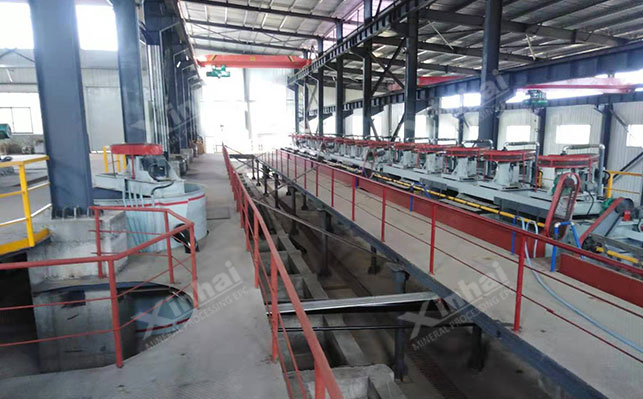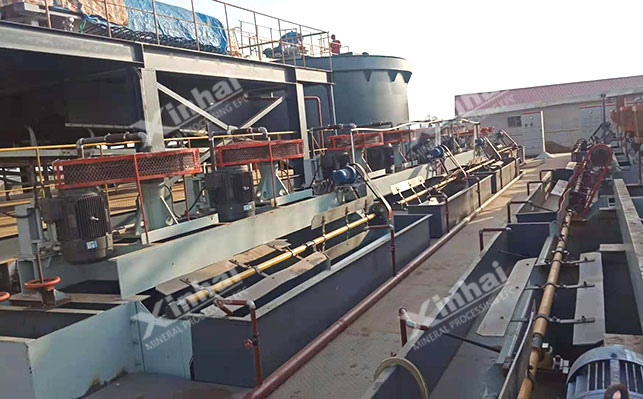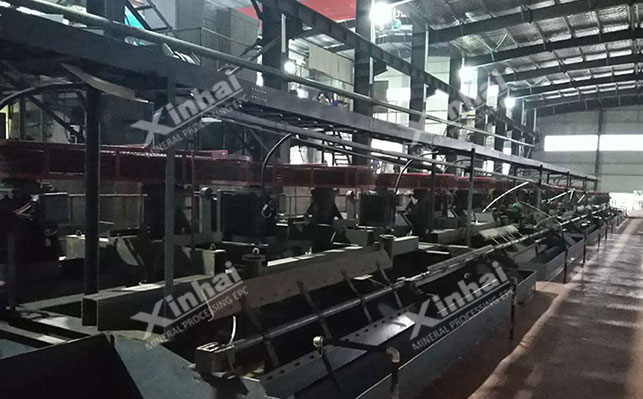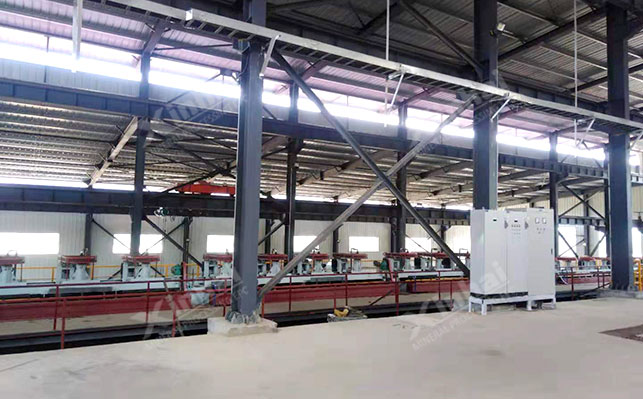
15311826613
Click to add WeChatHematite is the main resource for obtaining weak magnetic minerals. When obtaining iron ore, the hematite must be beneficiated to obtain qualified iron concentrate for smelting. In the ore dressing process, due to the nature of hematite ore, flotation method is a commonly used process method, so hematite flotation separation process has Which ones? Let’s find out together below!

Common Hematite flotation separation technologyIt can be divided into two categories: single flotation and combined flotation, which are forward flotation, reverse flotation, forward and reverse flotation, magnetic separation-reverse flotation and strong magnetic separation-flotation.
The hematite positive flotation method is to adjust the pH of the slurry within the range of 9~11 , using anionic collectors to float iron minerals from the raw ore, leaving gangue minerals in the slurry of the flotation tank, and can be discarded under relatively coarse-grained conditions without desliming. Commonly used collectors are fatty acids or hydrocarbon sulfate esters and petroleum sulfonates.

This flotation method is simple to use and has low processing cost. It has great advantages for processing a single hematite ore. However, it requires multiple selections to obtain qualified hematite concentrate, and the foam is easily sticky, making the product difficult to concentrate and filter. In addition, the selection of collectors has great limitations, and it is difficult to increase the grade of iron concentrate to above 65%. Combined with the limitations of the properties of iron ore itself, positive flotation is rarely used.
Hematite reverse flotation uses anionic or cationic collectors to float out the gangue minerals from the raw ore and remove the iron. The minerals remain in the flotation cell. Anion collector flotation: It mainly uses fatty acid collectors for reverse flotation after activation of calcium ions, and uses sodium hydroxide or sodium hydroxide mixed with sodium carbonate to adjust the pH to above 11 , using starch, sulfonated lignin and dextrin to inhibit iron minerals and achieve reverse flotation. This method is suitable for the flotation of iron ore with higher grade and easier to float gangue. Cation collector flotation: It mainly uses sodium carbonate to adjust the pH of the slurry to 8~9, uses starch, dextrin, tannin, etc. to suppress iron minerals, and uses amine collectors to float When selecting quartz gangue, the collector should mainly choose its ether amine, followed by fatty amine.

Hematite forward and reverse flotation separation process The slurry is first subjected to forward flotation, and the hematite concentrate foam is scraped out and then sent to another flotation machine for reverse flotation. Finally, the hematite concentrate is enriched in the flotation tank of reverse flotation. The commonly used collector is dodecylamine. This flotation process separates hematite and can greatly improve the flotation index of hematite ore, but the method is cumbersome and requires a large amount of chemicals.
Magnetic separation-reverse flotation is to first conduct magnetic separation of hematite minerals to separate out hematite , the remaining minerals use dodecaamine cations as collectors, and reverse flotation is carried out in neutral pulp (slurry pH is 7), which can effectively improve the quality of iron concentrate.

The strong magnetic separation-flotation method is to coarsely grind the hematite and then undergo high-intensity magnetic separation to select the coarse-grained monomer quartz and easy-to-sludge chlorite and other gangue minerals in the ore (qualified tailings ), and then carry out fine grinding and flotation operations.
The above content is an introduction to several common hematite flotation separation processes. In addition to flotation, there are also gravity separation and magnetic separation methods for separation. In actual hematite beneficiation plants The specific process to choose depends on the properties and processing capacity of hematite ore. Therefore, the editor recommends conducting a beneficiation test first, and then designing and customizing a reasonable process plan and complete set after analysishematite beneficiation equipment. If you have any needs, please feel free to consult Xinhai Mining Equipment.